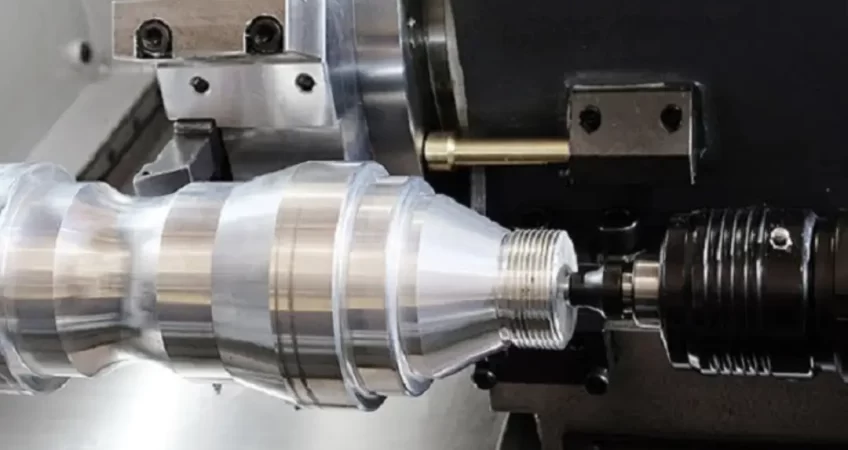Maintaining CNC machines in Oman requires a proactive and climate-conscious approach due to the country’s high temperatures, humidity in coastal areas, and frequent dust exposure. One of the first and most crucial steps is ensuring regular cleaning to remove dust and debris, which can accumulate quickly and damage internal components. Placing machines in a climate-controlled workspace helps combat the extreme heat, minimizing thermal expansion that can affect accuracy and alignment. Lubrication also demands close attention, as higher temperatures can cause lubricants to degrade faster – using high-temperature resistant oils and checking levels frequently is essential.
In humid regions like Muscat or Salalah, moisture can lead to rust and corrosion, making humidity control through dehumidifiers and rust protection measures equally important. The electrical systems of CNC machines should be monitored closely to prevent damage from voltage fluctuations, with surge protectors and routine inspections being vital. Likewise, coolant systems must be maintained diligently to prevent evaporation and bacterial build-up, especially in Oman’s hotter months. Air filters and cooling fans should be cleaned regularly, as clogged components can reduce airflow and lead to overheating. Establishing a preventive maintenance schedule helps ensure that both mechanical and software components are consistently operating at peak performance, reducing downtime. Lastly, operator training is fundamental – well-informed staff can identify early signs of malfunction and prevent unnecessary strain on the machines. By following these combined practices, businesses can significantly extend the life and reliability of their CNC machines in Oman, even under the toughest environmental conditions.
- Regular Dust and Debris Cleaning – Oman’s dry and dusty environment means that particles can easily find their way into CNC machines, especially those located in semi-open or industrial areas. Dust build-up can affect cooling systems, sensors, and moving parts. Therefore, it is important to clean the machine daily or after every shift. Use compressed air and vacuum cleaners to remove debris from tight spaces. Ensure enclosures and protective covers are always closed during operation.
- Climate-Controlled Workspace – Temperature fluctuations in Oman, particularly in the summer when temperatures can exceed 45°C, can cause components to expand and contract, leading to misalignment or thermal deformation. Install air conditioning or temperature regulation in the CNC workspace. Maintain a consistent temperature to reduce wear on sensitive electronic components. Avoid placing machines in direct sunlight or near heat sources.
- Lubrication Checks and Schedule – High temperatures can cause lubricants to break down faster, reducing their effectiveness in preventing friction and wear. Improper lubrication can result in increased maintenance costs and machine downtime. Follow manufacturer guidelines for lubrication frequency and type. Use lubricants designed for high-temperature environments. Check and replace oil or grease regularly to ensure optimal performance of CNC machines in Oman.
- Humidity Control – Although Oman is mostly arid, coastal regions like Muscat and Salalah can experience higher humidity levels. Moisture can lead to rusting of metal components and affect the integrity of electrical systems. Use dehumidifiers in closed environments and store tools and sensitive components in dry cabinets. Apply anti-rust treatments on metal surfaces periodically.
- Electrical System Monitoring – Power surges, voltage fluctuations, and overheating can all affect the performance of CNC machines. These issues are more common in extreme weather conditions, such as during peak summer in Oman. Install surge protectors and uninterruptible power supplies (UPS) and regularly inspect wiring and connectors for signs of wear or corrosion. Schedule electrical maintenance at least once a quarter.
- Coolant System Maintenance – Coolants play a crucial role in maintaining the temperature of the cutting area and preventing overheating. In Oman’s climate, coolants can evaporate faster and become less effective. Monitor coolant levels and top up as needed and check for leaks and ensure proper flow during operation. Replace coolant periodically to avoid bacterial build-up and degradation.
- Filter and Fan Cleaning – Fans and air filters can become clogged with dust and debris, especially in the desert or industrial zones. Reduced airflow may lead to overheating of the CNC machine’s internal systems. It is important to clean or replace filters every two weeks. Ensure all cooling fans are operational and unobstructed. Also, consider using high-efficiency filters suitable for dusty environments.
- Preventive Maintenance Schedule – Routine preventive maintenance is the key to minimizing downtime and prolonging the life of CNC machines in Oman. This includes not only mechanical and electrical checks but also software updates and calibration. Create a monthly checklist for machine inspection and schedule annual maintenance with authorized service providers. Keep a log of all maintenance activities for tracking and performance reviews.
- Operator Training – Even with the best maintenance practices, improperly trained operators can cause unnecessary wear and tear on machines. Human error is often the root of preventable breakdowns. Train staff regularly on standard operating procedures. Conduct refresher courses focused on seasonal maintenance challenges. Encourage prompt reporting of any unusual noises, vibrations, or alerts from the machine.
Maintaining CNC machines in Oman requires a tailored approach that takes into account the region’s heat, dust, and humidity. By implementing a proactive maintenance routine, using climate-appropriate materials, and training your team effectively, you can ensure consistent output and machine longevity. Investing in regular upkeep not only prevents costly repairs but also keeps your operations running smoothly – even in Oman’s toughest weather conditions.

